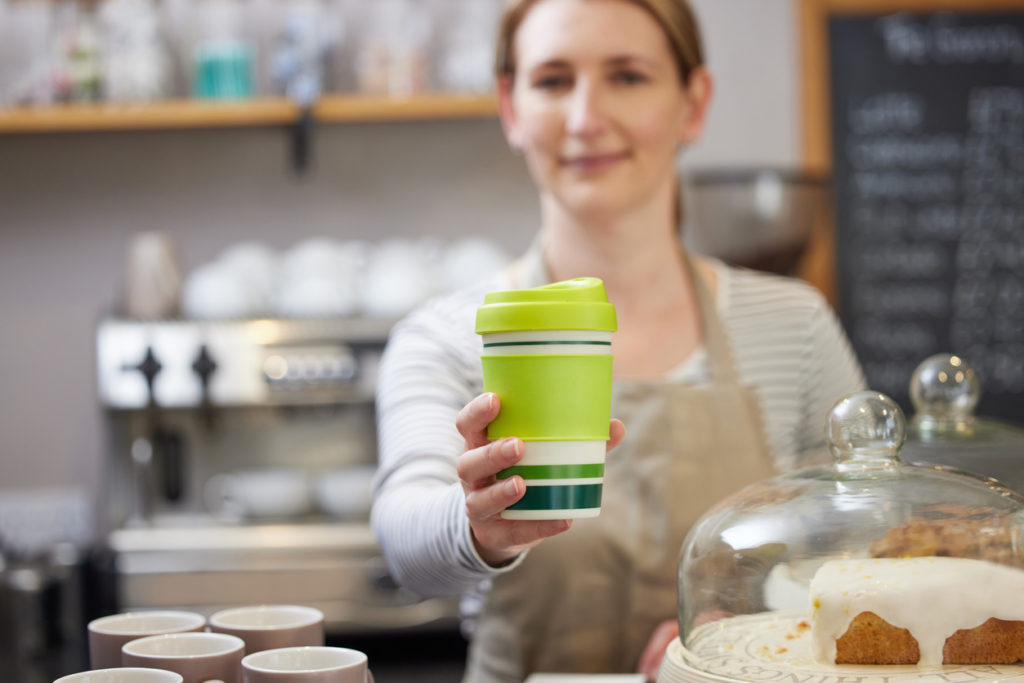5 Innovations for the Future of Coffee Cup Recycling

Unfortunately, paper coffee cup recycling is not widely available throughout North America yet. These single-use coffee cups are actually a huge problem for recycling contamination. There are many contributing factors to the reality that they aren’t usually accepted for recycling, but the fact that they are lined with plastic is the main issue.
With the public mindset increasingly focused on plastic waste reduction in recent years, plastic-lined paper coffee cups are beginning to be seen as big problem for waste and recycling. Recycling facilities have amped up their efforts to reduce recycling contamination from improper disposal. And the abundance of these cups in landfills has caught the attention of the people.
The US alone disposes of an estimated 50 billion coffee cups annually. Essentially, things need to change, and the right stakeholders are beginning to take action.
Paper Mills are Committing to Expansion

Near the end of 2021, a gathering of many paper mill representatives met to discuss expanding paper cup recycling. This group represents around 75% of the mixed paper production market in US and Canada. They have confirmed that paper cups still are able to be recycled for their high-quality fibers, regardless of the plastic lining.
With this meeting, the group committed to accepting bales of paper cups from recycling facilities in order to use in their manufacturing. This change will not be immediate, but as the process becomes organized, the likelihood that your local recycling facility may accept plastic-lined paper cups for recycling in the future is looking more probable.
New Technologies for Coffee Cup Recycling

Separating plastic from paper used to be a nearly impossible task for recycling facilities, but as more products began to use mixed materials, the need for new technologies to recycle these materials grew. Getting those fibers from single-use paper cups has become a necessity in material recovery.
A MRF (Material Recovery Facility) in Denver, Colorado was one of the first US locations to innovate a way to remove and recycle those paper fibers. Using more powerful high-consistency rotors, they discovered a way to successfully remove the plastic and maintain the integrity of the paper.
Now there are a handful of MRFs spanning across North America that are utilizing advanced technologies to separate paper and plastic products in order to make coffee cups recyclable. The paper and wood industry is investing approximately $5 billion in manufacturing infrastructure for recycling and paper recovery by 2023.
So while the majority of MRFs cannot yet accept mixed material products like coffee cups, we should see a drastic change in what is accepted in the next few years.
Manufactures are Inventing Alternatives

While paper mills and recycling facilities are increasing their involvement in accepting paper cups, manufacturers are trying to solve the single-use cup problem by making coffee cups recyclable or finding alternative materials for hot cups.
Many cup manufactures are now increasing their product options to include compostable or biodegradable cups. This offers up the option of disposing of your coffee cup in a compost, or in some cases in a municipality’s organics program (although check with your local program before tossing them in). Even if these types of cups end up in landfills, they will break down quicker than their plastic-lined counterparts.
One manufacturer has invented a new version of the to-go cup that is fully recyclable: the ButterflyCup. This cup eliminates the need for a lid and has no plastic lining. It is meant to be recycled with ordinary paper, as long as it is emptied before recycling. The cup is also considered compostable and biodegradable.
Coffee Shops are Committing to Take-Back Programs

There are a few independent companies that have created their own takeback programs for recycling. These programs enlist local coffee shops and businesses to use their services as a way to recycle coffee cups.
A company operating out of California and Nevada called reCUP sells their cups to coffee shops, the coffee shops have a specific recycling bin for these cups and offer cup return incentives, then reCUP collects the cups and brings them to facilities that recycle the paper.
In Toronto, there is a company who sells coffee cup stackers called StackitNow. To eliminate the beverage contaminants and the unrecyclable coffee lid, coffee drinkers place their empty cups upside down on the stacker then the StackitNow company collects the coffee cups. They start the paper cup recycling process by shredding them, which makes it easier to remove the plastic lining. Then they mix the shredded coffee cups with other shredded paper to recycle into new paper products.
Legislation is Coming for Single-Use Coffee Cups

While we’ve all heard about different legislation that has been banned single-use plastic items such as straws, Styrofoam, and plastic bags, eyes are now looking towards plastic-lined paper coffee cups. This next wave of single-use plastic bans will likely begin to focus more on take-out containers and single-use food items.
With the pandemic, the use of take-out packaging increased dramatically, drawing a big red circle around the issue of single-use plastic in our waste stream. The silver lining to this issue is that lawmakers have taken notice and are ready to make a more eco-friendly change to how plastic packaging is being manufactured, used, and disposed of.
In California, Berkley was one of the first locations in the US to enact a sweeping single-use take-out container packaging legislation that charges customers a 25 cent surcharge per take-away cup. Vancouver, British Columbia has followed suit with similar legislation for coffee cups.
The European Union has already enacted legislation for the ban of many single-use plastic items, including coffee cups by 2030. It is likely locations across North America will begin to push for more sustainable alternatives to single-use coffee cups as well.
What You Can Do Now for Coffee Cup Recycling

While it seems there is a multipronged approach to tackling this huge paper cup recycling issue, there is still plenty you can do to help too. The easiest option is to use a reusable coffee cup when possible. Some coffee shops will offer a small discount if you bring in your own reusable coffee cup when buying a coffee from them.
Another way you can help is to seek out coffee cup recycling in your area. Always check with your local recycling program to see if coffee cups are accepted before tossing them in the bin. It may not be possible yet, but your voice can be heard by contacting your local politicians and letting them know you want coffee cup recycling in your area.
Do you have any other ideas on how you can handle the coffee cup issue? Let us know in the comments below!